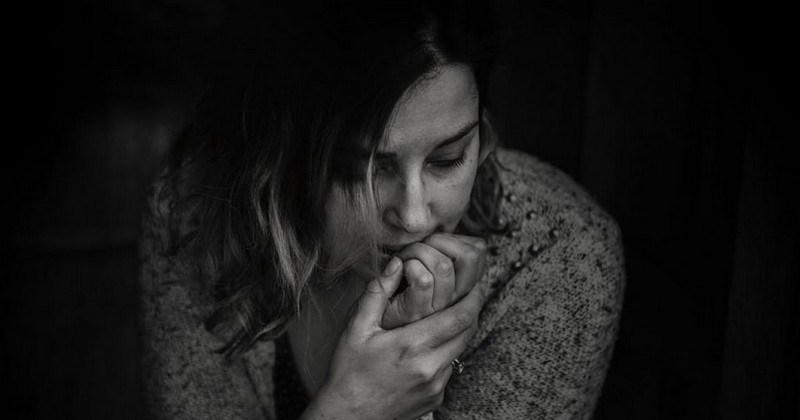When gender-based violence becomes subtle: much more than just a blow

This violence can take forms that in certain contexts are overlooked or normalized.
Gender-based violence refers to physical, psychological, economic, sexual, symbolic and sexual abuse of women simply because they are women. that occur against women simply because they are women. This does not mean that there are no cases of violence by a woman against a man, but because of the seriousness, intensity and frequency of violence against women, this category was created to highlight the large number of cases of violence and deaths of women that continue to occur.
However, in practice we tend to pay attention basically to cases of physical abuse or murder linked to this type of violence. We leave off the map other forms of gender-based violence that are subtle.
How does gender-based violence manifest itself?
Gender violence has different faces, we are going to list and characterize some of them.
Physical Violence
This refers to mistreatment directed at the bodysuch as hair-pulling, pushing, shoving, struggling, blows, burns, death.
Psychological Violence
Includes insults, shouting, manipulation, disqualification, belittling, indifference, pathological jealousyindifference, indifference, pathological jealousy, isolation, threats, harassment, control.
Sexual Violence
It ranges from forcing someone to have sexual relations by force, or situations of harassment, sexual abuse, rape, to trafficking of women.
Economic Violence
Money and goods are used as a way to maintain control and power. maintaining control and power..
Symbolic Violence
Consists of the naturalization of the role of women as weak and inferior. We can observe it in phrases, ideas, stereotypes, etc.prejudices that reproduce the inequality between men and women seen as inferiority.
Why are violent acts sustained over time?
Surely you have heard situations (or maybe it happened to you) where after committing a violent act in a couple, after hours, days or weeks, the relationship seems to continue as if nothing had happened, the relationship seems to continue as if nothing had happened.. The violent person apologizes, the violated person forgives and an atmosphere of love, hope and tranquility reigns.
But as time goes by, strong arguments, tensions, fights and even violence appear again. This is due to a repetitive mechanism with which gender violence is installed in the form of a circle or cycle.
What are the moments of this violent cycle?
The phases that we can frame in this cycle are the following.
1. Psychological aggressions
Violence does not accompany the relationship from the beginning. Even the first physical mistreatment does not appear without first presenting features of psychological violence. The ground is prepared for the first blow. It can start with insults, manipulation, disqualification, pathological jealousy, isolation, control or indirect violence.
2. Tension and physical aggression.
When the climate of tension is great and words and insults are no longer enough, the violent one resorts to the irruption with the body, marking who is in charge, who has the power there.who is in charge, who has the power there. Pushes, punches, kicks, burns. The escalation of violence can even lead to death.
3. Apologies
There may be repentance in the violent person for the act committed or a false repentance for his own benefit. It is at that moment when he proceeds with apologies, justifications, promises not to act like that anymore.
4. Forgiveness and illusion: the honeymoon
Out of love, to keep the family "together", to believe in promises, to hope that there really will be changes, or out of fear or dependence, among other factors, the abused woman forgives.
5. Apparent peace: the cycle begins again
A climate of love and harmony reigns, little or nothing remains of the violent act. Everything is love, reconciliation, tenderness, illusion. This will be overcome when the tension takes hold of the violent one again and chooses once again to unload all his strength and his problems on that woman, once again a victim of gender violence.
Some time will pass, apologies and "love" will return, until the cycle begins again.
What happens to the children of the victims of gender violence?
The exposure of the children, as witnesses of violence against women, has serious consequences on the children, at the emotional, behavioral, evolutionary, cognitive and bonding levels. Some of these consequences are mentioned below.
- Stress, anguish, sadnessanxiety disorders, excessive responsibilities.
- Deficit in impulse control, irritability, aggressive discharges, oppositionism.
- Fear, helplessness, guilt for not knowing how to help the mother or for not being able to defend her.
- Depression, low self-esteem, frustration, insecurity, emotional instability.
- Learning difficulties, school failure, attention and concentration problems.
- Difficulties in bonding with others, difficulties in solving social problems, lack of social skills, lack of self-esteem, frustration, insecurity, emotional instability.difficulties in solving social problems, lack of social skills, distrust, lack of empathy.
- Eating disorders (anorexia, bulimia, lack of appetite).
- Sleep disturbances.
- Psychosomatic symptoms such as secondary enuresis and encopresis, asthma, allergies.
Finally, perceived violence can be internalized and in many cases expressed in the form of antisocial behavior, misbehavior at school, delinquency, or substance abuse. In short, gender-based violence does not only affect women. It extends to the children, who suffer short- and long-term consequences.
(Updated at Apr 13 / 2024)